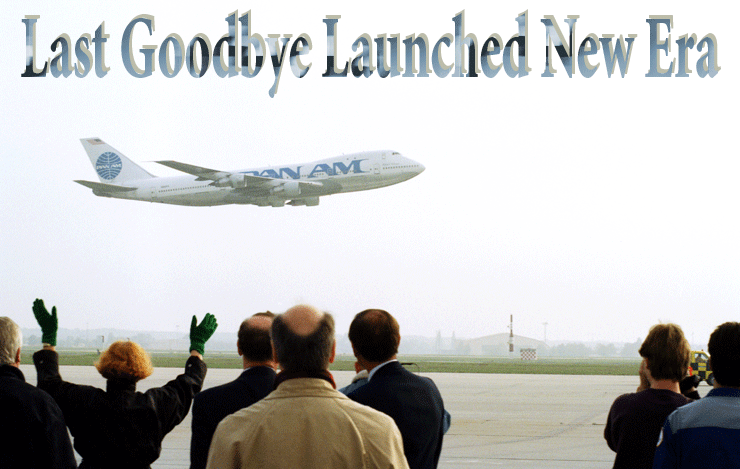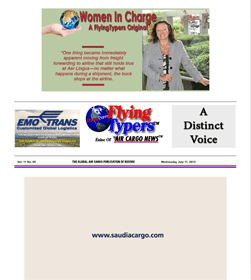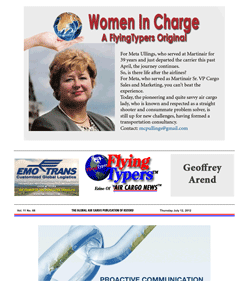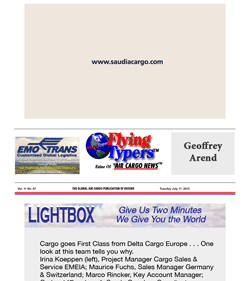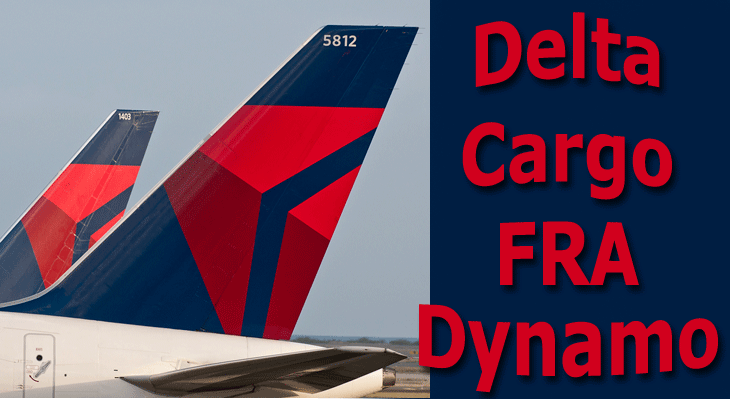
Frankfurt Exclusive—FlyingTypers
sat down with Danita Waterfall-Brizzi, Director
Cargo Sales EMEIA, and her team to talk about their
piece of the pie. Located at the sprawling Cargo-City,
Delta is located in the building of WFS, their handling
agent.
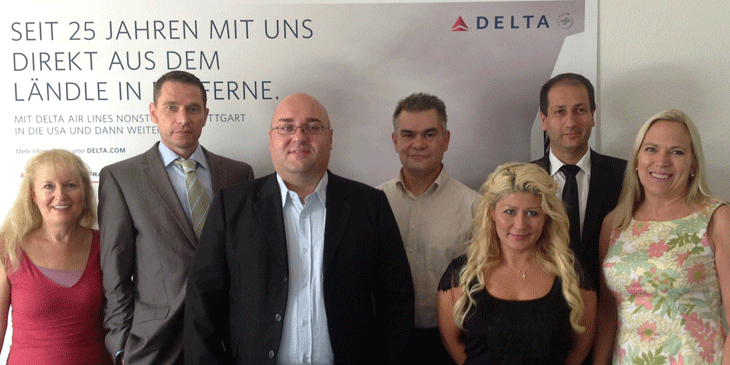
Left to Right—Irina Koeppen
(left), Project Manager Cargo Sales &
Service EMEIA; Maurice Fuchs, Sales Manager
Germany & Switzerland; Marco Rincker,
Key Account Manager; Gerhard Wahl , Sevda
Oyanbas Coordinator; Yusuf Mercan, Sales Coordinator
and Danita Waterfall-Brizzi, Director Cargo
Sales EMEIA.
|
Based at Frankfurt am
Main’s Rhein Main International airport, this
sales-driven organization manages business in 37
online and offline countries and includes 23 cargo
GSAs, generating $289 million of westbound production—roughly
one third of the carrier’s annual revenue.
Delta aircraft fly nonstop to North America from
20 online stations. The remaining 17 offline stations
are fed with freight brought in by truck or on another
airline into the online Delta network in the region,
i.e. KHI-CDG-DTW. Collaborative relationships exist
with Emirates Cargo as well as others that also
bring freight from Bangladesh, India, and Sri Lanka
to connect with DL flights to the U.S.
The first thing that
is easy to notice is the multicultural aspect of
the team, with a wealth of international experience.
Danita hails from the Seattle area and has been
in Europe since 1996 in a variety of positions that
took her to Delta outposts in the UK, Belgium, Russia,
and Germany. She is fluent in Russian and German.
Irina Koeppen is project manager cargo sales &
service EMEIA, comes from St. Petersburg in Russia,
and has been in Frankfurt since 1997. Maurice Fuchs
is sales manager Germany and Switzerland and is
a local, as is Gerhard Wahl. There is also Marco
Rincker, Key Account Manager, Sevda Oyanbas Coordinator,
and Yusuf Mercan, Sales Coordinator.
There is a palpable,
high level of enthusiasm in this team whose members
come across as driven professionals. A testament
to this spirit is one of the comments made—that
there is “nobody mediocre in the Delta cargo
organization”—and the knowledge and
conviction that Delta recognizes all the areas that
contribute to profit. Senior corporate management—whether
it’s CEO Richard Anderson, Senior Vice President
and Chief Cargo Officer Neel Shah, and “cheerleader”
par excellence Ray Curtis—are all personally
well known in Frankfurt. What it comes down to is
very simple: people are motivated and want to contribute;
when that contribution is recognized it fuels further
success. No MBA needed. Cargo is responsible for
a 7 percent contribution to the carrier’s
overall profit.
The way European sales
are managed has evolved; Delta has had its own staff
in the UK, France, and Germany since 2008, while
SkyTeam partner KLM acts in AMS. Both AMS and CDG
sales have been growing and the harmonization with
the SkyTeam partners is ongoing and making progress.
The EMEIA cargo operations are based in London;
David Linford serves as regional director with a
team of four. The sales team feeds cargo originating
in Germany to the UK, AMS, and CDG because there
are more flight frequencies there. There is much
focus on trade lane management.
Some of the things
of which we weren’t aware include Delta’s
operation of some one-way passenger charter flights
to European destinations, for which westbound sales
generate up to 30 tons of cargo for the otherwise
empty return to the U.S. Another perhaps not generally
well known fact is that during the period of 2009-2011,
along with all U.S. carriers, Delta could not accept
shipper-built units for security reasons; needless
to say, this resulted in a significant advantage
for competing European carriers. The recent U.S./EU
security agreements are supposed to have resolved
this issue and literally within weeks it should
be able to compete on equal terms.
Danita says that by
now “many of the kinks have been worked out
and we can focus on going forward, benefit from
the reputation Delta has earned as a financially
sound carrier.” Talking to the other team
members about what they perceive constitutes their
competitive advantage, Maurice Fuchs says “DL
exceeds in customer service; speed is our secret.”
He went on to say that “we prioritize based
on customer requirements” and internally there
is much collaboration with revenue management and
IT.
While it may sound
corny in our fast, digital, global world—a
world which can be rather cynical—several
people mentioned Delta’s “Rules of the
Road", which outlines a set of principles and
relatively simple and basic guidelines for doing
business. It seems to have resonated. More than
one person told us that Delta exceeds at educating
its staff, whether it is sales, marketing, or communications.
The Delta Cargo Flight Plan at the head office in
Atlanta, which FlyingTypers reported about,
has its EMEIA version in full display, listing specific
objectives for 2012.
Maurice Fuchs told
us how how the “Variation Wheels” product
line came about. The Delta operations person in
Stuttgart was convinced there was an opportunity
to develop a car shipping program. It didn’t
take him long to get Maurice onboard and—to
make a long story short—it took them one year
to get everyone onboard and formalize the program.
They first trialed loading the company car in the
B767 and the rest, as they say, is history. The
STR ops guy was brought to ATL to train other staff
and in 2011 Delta Cargo shipped a total of 29 cars,
averaging nearly $10,000 each in revenue. A Porsche
project is underway with 11 test shipments completed
successfully and a “fly & drive”
package is in process. Flight DL107 FRA/JFK on June
16, 2012, carried a vintage 1963 Aston Martin DB4
GT valued at $919,000.
Cars have been flown
for years, but the point that Maurice makes is finding
new ways of doing things, taking the initiative,
and working it internally and with the customers
until something profitable develops. Having the
support of his colleagues and management team mean
more to him than words can describe and it is what
fuels him every day.
Trends change, and
lately there have been more perishables from Latin
America to North America than from Europe, which
has evolved into exporting more temperature controlled
products, including pharmaceuticals. Another deal
is UPS business flying cargo on Delta aircraft.
Gerhard Wahl came
on board Delta in 1991 from Pan Am and left a few
years later to join GateGourmet, a catering company
where he stayed for nearly 10 years before returning
“home” to cargo in 2006. His first remark
is about how much things have changed since Neel
took over in 2008. “There is a much warmer
atmosphere, management is more in touch with the
people, and it’s appreciated.” Gerhard
took over from Irina, who used to do his Excel work
for regional revenue management. He says that revenue
per flight is higher in 2012 than last year despite
the impact of rate exchange fluctuations.
It’s a good
day in Frankfurt.
Ted Braun/Flossie |




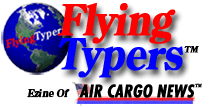



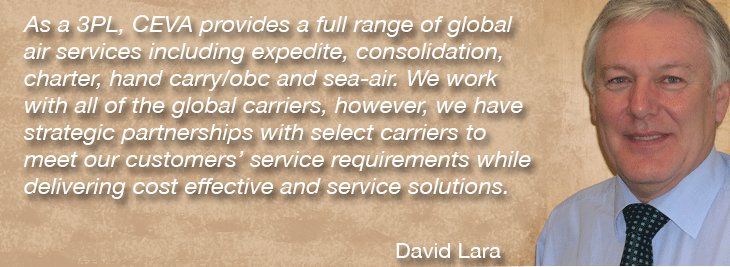
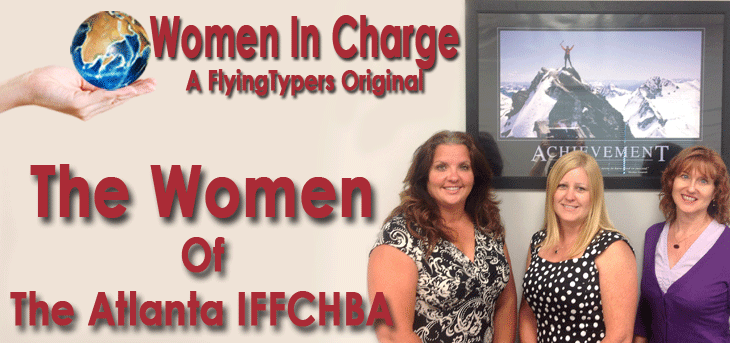
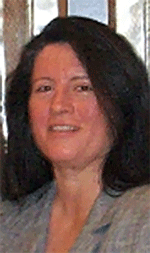 There
are about 105 companies in Atlanta that are members
of the association, and anywhere between 50-75 attendees
at its monthly meetings (held on the second Tuesday
of the month) out of a universe of 150-160 licensed
Customs Brokers. Needless to say, the work of the
officers is voluntary—these women have a rather
busy day job, therefore much depends on the support
of the respective companies for which they work. Elections
are held yearly, with the next one in July of this
year. The trade has seen some consolidation as more
of its clients are struggling in these volatile economic
times.
There
are about 105 companies in Atlanta that are members
of the association, and anywhere between 50-75 attendees
at its monthly meetings (held on the second Tuesday
of the month) out of a universe of 150-160 licensed
Customs Brokers. Needless to say, the work of the
officers is voluntary—these women have a rather
busy day job, therefore much depends on the support
of the respective companies for which they work. Elections
are held yearly, with the next one in July of this
year. The trade has seen some consolidation as more
of its clients are struggling in these volatile economic
times. 